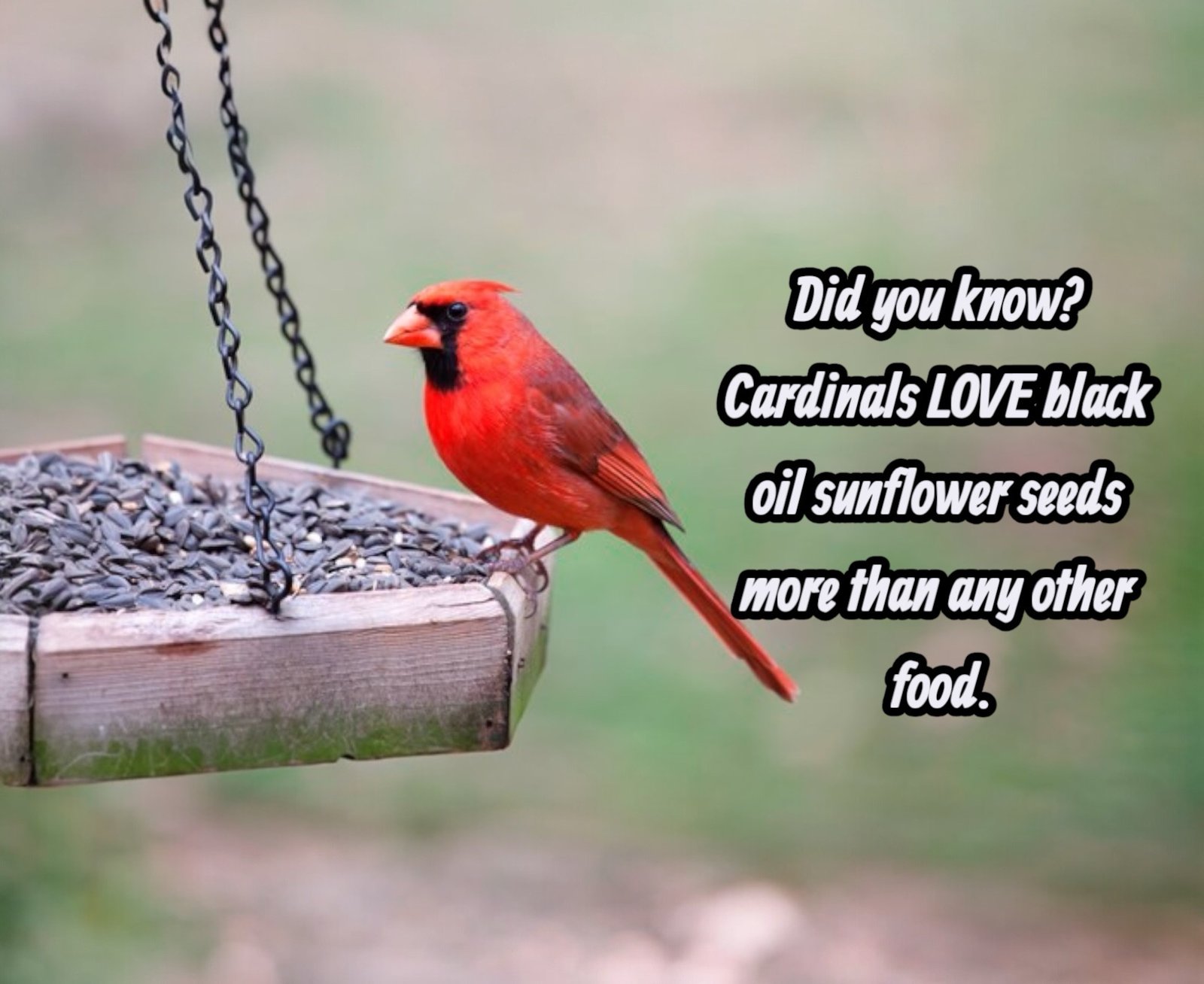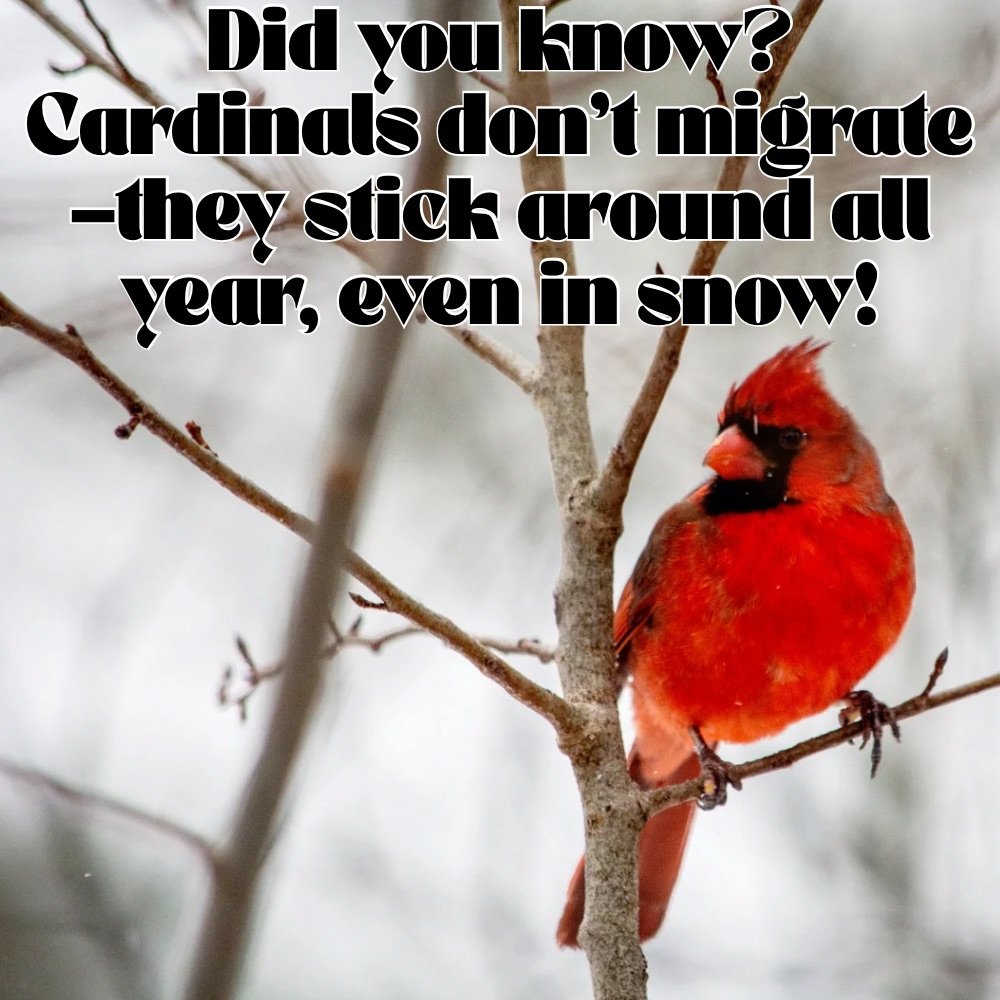
What Kind of Bird is a Cardinal?
Cardinals are songbirds, and the most famous one in North America is the Northern Cardinal. With its vibrant red feathers and black mask, the male cardinal is instantly recognizable. The females are just as stunning with their softer, warm tan coloring and hints of orange-red on their wings and tails.
Cardinals don’t migrate—they stick around all year long, which makes them one of the few songbirds you’ll still see on a snowy winter day. That’s part of why they’re so beloved—when everything else feels gray, there’s that red flash in the trees, full of life.

Where Do Cardinals Live?
Cardinals are found throughout the eastern and central United States, and even down into Mexico and parts of Central America. You’ll find them in backyards, forests, swamps, and even desert edges. They love areas with dense shrubs and thickets for nesting and hiding, but they’re not afraid of people either.
Do cardinals stick around through the winter? We answered that in this article. Click here!
Got a feeder? You’re already halfway to attracting cardinals. They love black oil sunflower seeds and will gladly stop by if you’ve got a steady supply.
You can explore more about birds in general in our birds category right here.

What Do Cardinals Eat?
Cardinals are omnivores. That means they eat both plant material and meat—in their case, mostly seeds, fruit, and insects. Their thick, cone-shaped beaks are made for cracking open seeds with ease, but they’ll also go after beetles, grasshoppers, and even small snails when raising babies. This is what cardinals like to eat…
Some of their favorite foods include:
- Black oil sunflower seeds
- Safflower seeds
- Cracked corn
- Berries
- Caterpillars and bugs in the spring
Want cardinals in your yard? Set out a tray or platform feeder—they’re not big fans of hanging ones.

Do Cardinals Mate for Life?
They sure do. Cardinals are one of those sweet bird species that tend to form monogamous pairs, staying together year after year. During courtship, you might even see a male feeding seeds to a female beak-to-beak—like a little bird kiss.
They usually raise 2–3 broods per year and both parents help feed the babies. Once bonded, many pairs stick close, even through the winter months.

What Sounds Do Cardinals Make?
Cardinals have a wide range of whistles, chirps, and songs. The males are known for their loud, clear whistles that sound like “cheer-cheer-cheer” or “birdie-birdie-birdie.” But the females sing too, which isn’t as common in the bird world.
In fact, some of the most complex songs come from female cardinals, especially during nesting season when they may sing to communicate with their mate. Listen closely, and you’ll start to recognize individual birds by their unique voices.
Are Cardinals Aggressive?
Cardinals are territorial, especially during breeding season. You might even see one attacking its own reflection in a window or mirror—thinking it’s an intruder. They’re not dangerous to humans, but they do defend their nests fiercely.
If you spot a male flying at your car side mirror over and over, it’s not because he doesn’t like your vehicle—it’s because he thinks it’s another cardinal trying to move in on his space.
What’s the Deal with White or Yellow Cardinals?
They exist—and they’re rare. Most cardinals are bright red (males) or tan with red accents (females), but occasionally you’ll spot a white cardinal or even a yellow one. These unusual birds are usually caused by genetic mutations.
A white cardinal likely has leucism (partial loss of pigmentation), and yellow ones may have a rare xanthochroism condition that replaces red pigments with yellow. If you see one in your yard, you’ve got a one-in-a-million sighting on your hands.

What Does It Mean When You See a Cardinal?
To many people, a cardinal sighting is deeply personal. It’s often seen as a spiritual sign—many say it means a loved one who has passed is nearby. The bright red color stands out in any season, especially winter, and feels like a little sign of hope or comfort.
Even if you’re not the spiritual type, there’s something special about a cardinal visit. Their bold presence and song feel almost intentional.
Want to discover more amazing birds like this one? Browse our full bird category here or dive straight into our cardinal section.
Do Cardinals Use Birdhouses?
Not really. Unlike bluebirds or chickadees, cardinals don’t like enclosed nest boxes. They prefer open nesting areas like forks in shrubs or trees, using twigs, grasses, and even bits of trash to build their nests.
If you want to attract nesting cardinals, skip the birdhouse and plant thick shrubs or native bushes like dogwood, elderberry, or honeysuckle. Give them some cover and a bit of peace, and they’ll take care of the rest.
How Long Do Cardinals Live?
In the wild, most cardinals live around 3 years, but some have been known to make it up to 15! Predators, harsh weather, and accidents shorten their lifespan, but if a cardinal finds a good food source, shelter, and avoids danger, it can live a pretty long bird life.
If you’ve got cardinals visiting your yard year after year, chances are it’s the same pair—or maybe even their grown-up chicks raising a family nearby.
When Do Cardinals Lay Eggs?
Cardinals start nesting in early spring, usually around March, and can lay 2–3 broods per season. The female lays about 2–5 eggs at a time and does most of the incubating while the male brings her food.
Cardinal eggs are:
- Pale whitish or grayish in color
- Speckled with brown or reddish marks
- About the size of a large jellybean
After hatching, both parents pitch in to feed the babies—mainly insects and soft foods.
What’s the Cardinal’s Role in the Ecosystem?
Cardinals help control insect populations and disperse seeds, playing a crucial role in plant growth and overall ecosystem health. They’re especially important in suburban and forest edge areas where other native species may be declining.
By eating beetles, grasshoppers, and larvae, they help keep garden pests in check. And when they chow down on berries, they spread seeds through their droppings—nature’s little planters.
Are Cardinals Protected by Law?
Yes. Northern Cardinals are protected by the Migratory Bird Treaty Act, which makes it illegal to harm, capture, or sell them. That includes taking their nests, eggs, or even keeping one as a pet.
If a cardinal has nested in a bush or tree near your home, you’ve got a front-row seat—but it’s best to watch quietly from a distance and never disturb their nesting area.
Can You Tell the Difference Between Male and Female Cardinals?
Absolutely! It’s one of the easiest bird species to sex by sight alone.
Male Cardinals:
- Bright red all over
- Black mask and throat
- Loud and proud singers
Female Cardinals:
- Soft tan or light brown body
- Warm red tinges on wings and tail
- Also sing—but often more subtly
They both share that striking crest on top of their head and the thick orange beak.
Why Are Cardinals So Popular?
They’re beautiful, easy to recognize, stay around all year, and they’re packed with personality. That combo makes them one of the most loved backyard birds in America. They even rank as the state bird for seven U.S. states including Illinois, Indiana, Kentucky, North Carolina, Ohio, Virginia, and West Virginia.
There’s something uplifting about seeing that bright red flash in winter snow or hearing their cheerful call first thing in the morning.
What Time of Day Are Cardinals Most Active?
Cardinals are early birds—literally. They’re usually the first ones you’ll hear singing in the morning and some of the last to call it quits at dusk. If you want to catch them at the feeder, aim for sunrise and right before sunset.
They don’t migrate, so you can expect to see them even in cold weather, especially if you’ve got food out for them.
Why Do Cardinals Sometimes Look Bald?
Ever seen a cardinal with no feathers on its head? It’s not sick—just molting. During late summer, cardinals shed and regrow their feathers, and sometimes they lose them all at once on their head, making them look bald or scruffy.
It only lasts a few weeks, and before you know it, they’re back to their fully-feathered selves.
How to Attract Cardinals to Your Yard
Want to roll out the red carpet for cardinals?
Here’s what they love:
- Feeders with sunflower or safflower seeds
- Platform or tray feeders instead of hanging ones
- Thick shrubs or native trees for cover and nesting
- Fresh water year-round for drinking and bathing
Planting native species like dogwood, elderberry, or juniper also helps. Cardinals are loyal visitors if you make them feel at home.
Cardinal Myths and Symbolism
Cardinals have been tied to symbolism for centuries. Many believe cardinals are messengers from loved ones who’ve passed, especially when they appear out of nowhere or stick around during meaningful moments.
Others see cardinals as symbols of:
- Hope
- Renewal
- Strength
- Vitality
They even hold special meaning in Christianity, where their red color is associated with the blood of Christ and spiritual fire. Whether or not you believe in signs, you can’t deny there’s something magical about a cardinal visit.
You can explore even more about these stunning birds right in our growing Cardinal category here and the full Birds section for everything else with feathers.



